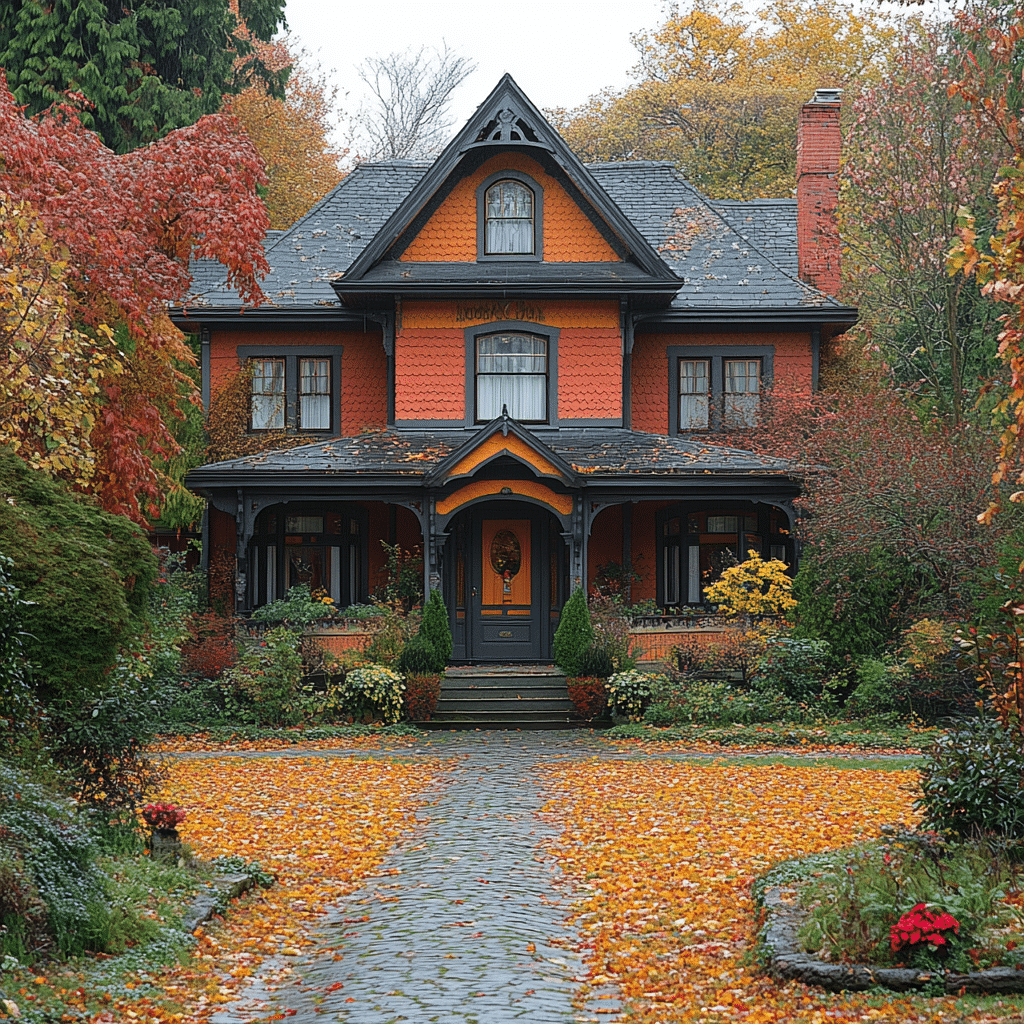
The Current Landscape: Understanding How Much a House Costs in 2024
In 2024, when we’re asking how much a house costs, the answer isn’t straightforward. The housing market is in flux, shaped by economic factors that include inflation, interest rates, and varied inventory levels. As interest rates hover around 6.75%, the median national home price has climbed to approximately $430,000. For many first-time buyers, this figure feels overwhelming, but it’s essential to dissect the components of these costs in order to understand the current landscape.
The demand for houses remains firm, even as supply continues to face challenges. This situation sends prices soaring in many regions. For instance, cities like Austin, Texas are experiencing an influx of buyers looking for homes that fit their changing needs. With an average cost of $520,000, that’s a solid uptick of about 10% year-over-year! Conversely, smaller towns still offer properties under $300,000, prompting many to seek housing options in suburbia.
So, what drives how much a house costs in various areas? The combination of job growth, urbanization, and economic factors play pivotal roles. As we dig deeper into each, we’ll see how closely connected these elements are to the dreams of homeownership in America.
Top Factors Influencing Home Prices: How Much a House Will Cost You
In early 2024, homebuyers face a significant hurdle due to mortgage interest rates resting at 6.75%. This impacts how much house they can afford. For instance, utilizing tools like Mortgage Rater can help potential buyers calculate what their monthly mortgage payments will look like based on various loan amounts. The higher the interest rate, the less house buyers can afford, which can lead to increased competition for cheaper homes.
Where a house is located can drastically affect its price. Cities like Raleigh, NC and Austin, TX see booming demand, while smaller towns might be left in the dust. In Austin, the swift price increase reflects a migration of young professionals attracted to its tech environment—homes averaging $520,000 aren’t uncommon. On the flip side, explore areas where you might find homes for under $300,000; it’s about adapting your expectations.
As remote work remains a viable option for many, buyers are increasingly drawn to larger homes or multi-family properties. The price for a two-bedroom home can vary significantly. For example, in the Pacific Northwest, it might be around $650,000, while houses of similar size in the Midwest could be priced at just $225,000. Understanding these price differentials can help you pinpoint where your investment will go the furthest.
Housing in states with expanding industries is pricier. For instance, homes in Silicon Valley have skyrocketed to an average of $1.5 million due to tech job growth. Conversely, regions with less economic activity might see stagnant prices. Researching local job markets helps homebuyers gauge how much a house might cost in a given area.
Ongoing supply chain shortages have pushed the average cost of building a new single-family home to $400,000. This increase impacts not just new constructions but also the overall market price of existing homes. As builders encounter higher material costs, those effects trickle down to buyers.
Changes in zoning can significantly impact housing prices. Cities adjusting their regulations to allow for denser housing often see a surge in availability and moderated prices. For example, San Diego’s zoning adjustments in 2023 resulted in a 15% increase in home availability.
Typically, house prices trend upward in spring, spurred by heightened buyer activity. Predictions for 2024 suggest a possible market correction could occur as interest rates stabilize and inventory increases. Monitoring seasonal trends is vital for potential buyers wanting to get the most value.

How Much Down on a House: Strategies for Buyers
When we talk about budgets, one essential question is: how much down on a house should you expect? Traditionally, down payments hover around 20% of the purchase price. However, various affordable options exist for first-time buyers. FHA loans can require as little as 3.5% down.
Putting less down may seem appealing, but remember, the lower your initial investment, the higher your monthly payments may be. Crunch the numbers with Mortgage Rater to see how different down payment options fit your budget. Remember, saving for that down payment can take time, but it opens the doors to achieving your homeownership goals.
What a Real Estate Agent Can Offer: How Long to Find a House with a Realtor
The home-buying journey can be overwhelming, but working with a real estate agent often simplifies the process. These professionals save you time and hassle, expertly guiding you through market conditions. Typically, expect the search to last anywhere from a few weeks to several months.
Choosing a seasoned agent can greatly enhance your efficiency. Those familiar with bustling markets often have access to off-market listings. For example, agents in Denver can speed up your search significantly, enabling you to find not just any house, but the right one.
Historical Perspective: How Much Was a House in 2005?
Looking back, it’s clear how much the economics of housing have changed. The median home price in 2005 was around $250,000, which is under 60% of today’s median of $430,000. This stark difference highlights the significant appreciation of home values over the past two decades.
As potential buyers contemplate the current prices, this historical perspective raises essential questions about potential market corrections. It’s crucial to analyze whether today’s market represents a golden opportunity or whether waiting could yield lower prices down the line.
Innovations in Home Buying: Leveraging Technology
Technology is a game-changer in the home-buying process. Virtual reality tours are becoming the norm, allowing buyers to explore properties without stepping foot inside. Online tools, including mortgage calculators and applications, streamline the pathway to homeownership.
Platforms like Redfin provide interactive maps, offering buyers real-time insights on home prices and neighborhood trends, helping them determine how much house they can realistically afford. This accessibility empowers buyers, making what was once a convoluted process far simpler.
Final Thoughts: Preparing for a Sound Investment in Real Estate
With the housing market constantly evolving, keeping up with pricing shifts and financing options is vital for prospective homeowners in 2024. The influences on how much a house costs are many—from economic indicators to innovative technology.
It’s crucial to be well-prepared as you embark on your journey toward homeownership. Understand that determining how much a house costs isn’t just about the dollar figure on the price tag—it’s aligning your financial strategy with your dreams of owning a home.
Whether contemplating how much down on a house you can afford or how long to close on a house, know that being informed makes all the difference. After all, homeownership is not just an investment; it’s about creating a space where you can plant roots and grow. For more insightful resources, check out Encroach Definition and discover How many Houses in America to better understand the current market landscape. Be sure to pay attention to trends like how many homeless in the USA for a broader perspective on housing availability.
Navigating today’s market is no small feat, but with the right tools and insights, you can make informed decisions that lay the foundation for a successful investment in real estate!
How Much A House Costs Today: Fun Trivia and Interesting Facts
The Price of a Home Now and Then
When pondering how much a house costs today, it’s fascinating to look back at the past. For example, did you know that the average house price in the U.S. was a mere $26,600 in 1969? That’s just a fraction of the staggering figures we see now! If you think about it, that’s almost as catchy as the “Summer of ’69” lyrics—it truly was a different era. In contrast, current home prices often float above the $400,000 mark in many areas, reflecting everything from inflation to changing living preferences.
With property prices skyrocketing, many people might wonder how many folks are managing to keep a roof over their heads. It’s estimated that millions of people are without stable housing. If you’re curious to delve deeper into this serious issue, you can read about How many homeless Usa citizens are currently struggling. It’s a sobering reality that adds context to the discussions we have about home values and affordability.
Surprising Facts About Housing Market Fluctuations
The dynamic nature of the housing market isn’t all doom and gloom, though! Interestingly, after events like the 2008 financial crisis, house prices took a dip but eventually led to a resurgence. This is akin to what happens in a wacky cartoon like Total Dramarama, where every upswing is met with unexpected twists. It’s the suspense of watching economies react to various stimuli—very entertaining in its own right!
Furthermore, psychological theories can surprisingly influence how much a house sells for. The red string theory, which discusses interconnected relationships, suggests that buyers often form emotional bonds with homes that can escalate their market value. One moment you’re viewing a house, and the next, you’re picturing your future there. It’s a game-changer and really demonstrates how emotions factor into real estate.
The Cultural Significance of Home Prices
Understanding how much a house costs is also a reflection of our society’s health. When housing costs soar, they can create ripple effects across communities; the struggle for affordability can even lead to increased homelessness rates. A big name like Mark Lenard, known for his notable roles, symbolizes how celebrities often champion housing stability. Their influence can spark important conversations about how we address housing issues.
As we think about how much a house costs today, remember it’s not just about numbers and statistics. It’s about people, homes, and communities shaping local histories. So the next time you hear buzz about house prices, think of the broader picture—our society is built on these very foundations, and the implications are felt well beyond just the properties themselves.




